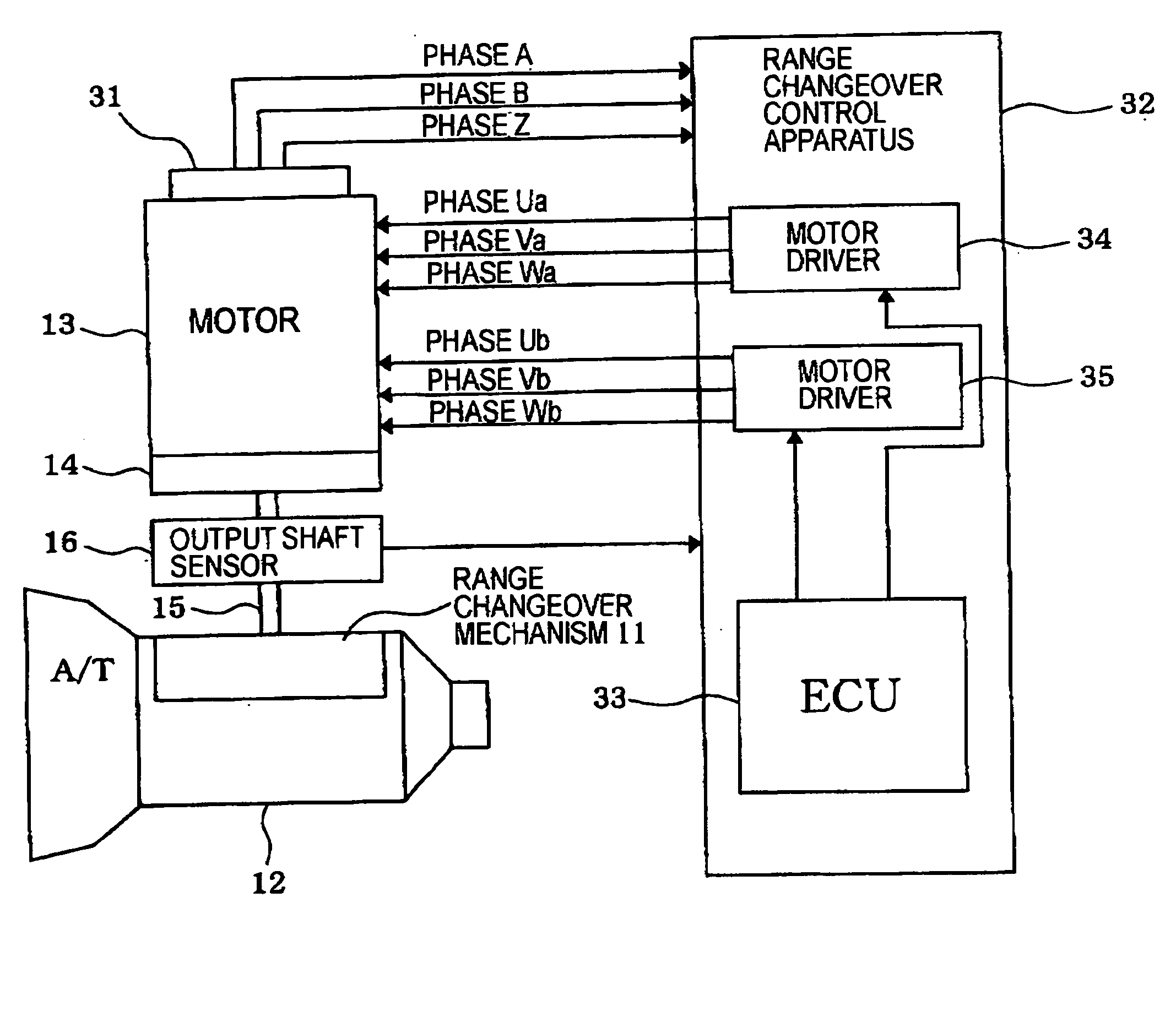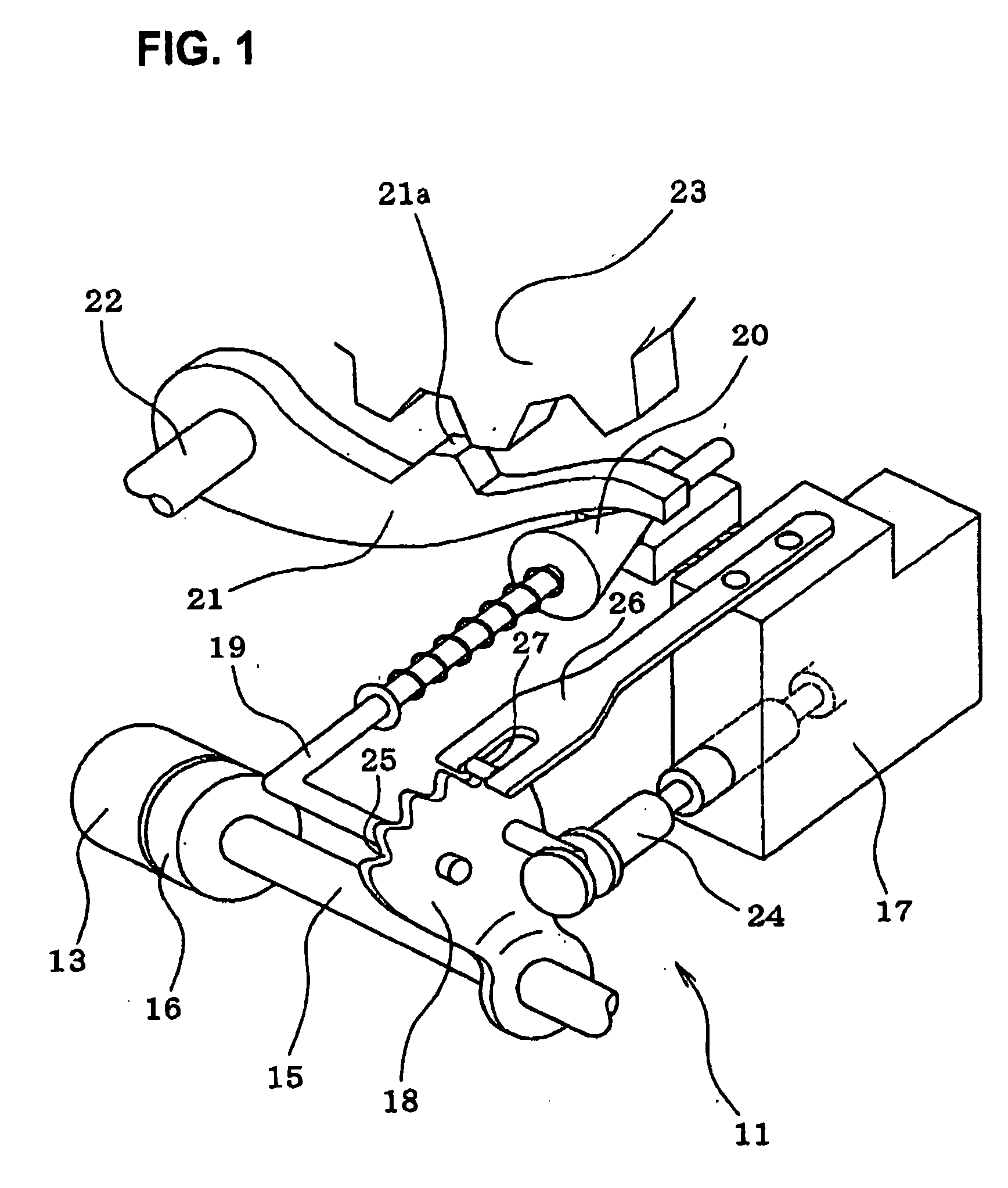Motor control apparatus for controlling motor to drive output shaft with positioning accuracy unaffected by backlash in rotation transmission system
a technology of motor control and output shaft, which is applied in the direction of motor/generator/converter stopper, dynamo-electric converter control, instruments, etc., can solve the problem of inability to accurately control the output shaft, and achieve the effect of increasing durability, accurate control, and increasing accuracy
- Summary
- Abstract
- Description
- Claims
- Application Information
AI Technical Summary
Benefits of technology
Problems solved by technology
Method used
Image
Examples
second embodiment
[0065] With the first embodiment, processing is repetitively performed by the ECU 33 at predetermined time intervals whereby the target motor rotation angle θ1tg is set in accordance with the difference amount (θ2−θ2tg), i.e., the deviation of the detected output shaft rotation angle θ2 from the target output shaft rotation angle θ2tg. However immediately after driving of the motor 13 has started, the rotation angle relationship between the output shaft 15 and the motor 13 (i.e., the rotor shaft of the motor 13) is indeterminate, and this condition continues until the motor 13 has rotated by a sufficient amount to take up all of the backlash in the rotation transmission system. As a result, it is not possible to accurately compensate the target motor rotation angle θ1tg by using the detected output shaft rotation angle θ2 from the output shaft sensor 16, during that initial condition after driving of the motor 13 has commenced, until the backlash has been taken up. Thereafter, the o...
third embodiment
[0080] A third embodiment of a motor control apparatus will be described referring to FIGS. 10 to 13. With the first and second embodiments above, the output shaft sensor 16 is formed of a device such as a rotary potentiometer which produces an output voltage that changes linearly in accordance with changes in the angular position of the output shaft 15. With the third embodiment, as shown in FIGS. 10 and 11, the output shaft sensor is configured as a set of four switch sections Psw, Rsw, Nsw, Dsw, respectively corresponding to the P, R, N and D shift positions of the automatic transmission. Each of these switch sections Psw, Rsw, Nsw, Dsw is coupled to the output shaft 15 such as to be set in an ON state, in which an output signal at a level referred to as the ON level is produced, when the output shaft 15 is within a specific corresponding range of angular positions. For each switch section, the corresponding range includes an angular position of the output shaft 15 whereby the co...
fourth embodiment
[0107] With the third embodiment, after driving of the motor 13 has commenced, the second setting of the target motor rotation angle θ1tg is performed only when a first edge of an output signal from one of the switch sections Psw, Rsw, Nsw, Dsw constituting the output shaft sensor is detected. Subsequently, that value of θ1tg is held fixed until completion of the shift position changeover operation. A fourth embodiment will be described, which is basically similar to the third embodiment, employing a map of values for θ1tg such as that of FIG. 13. However the fourth embodiment utilizes a target motor rotation angle setting routine as shown in FIG. 14, in place of the routine of FIG. 12 for the third embodiment. With the fourth embodiment, while the motor 13 is being driven for rotation during a shift position changeover operation, resetting of the target motor rotation angle θ1tg is performed each time a rising edge or falling edge of an output signal from a switch section of the ou...
PUM
 Login to View More
Login to View More Abstract
Description
Claims
Application Information
 Login to View More
Login to View More - R&D
- Intellectual Property
- Life Sciences
- Materials
- Tech Scout
- Unparalleled Data Quality
- Higher Quality Content
- 60% Fewer Hallucinations
Browse by: Latest US Patents, China's latest patents, Technical Efficacy Thesaurus, Application Domain, Technology Topic, Popular Technical Reports.
© 2025 PatSnap. All rights reserved.Legal|Privacy policy|Modern Slavery Act Transparency Statement|Sitemap|About US| Contact US: help@patsnap.com



